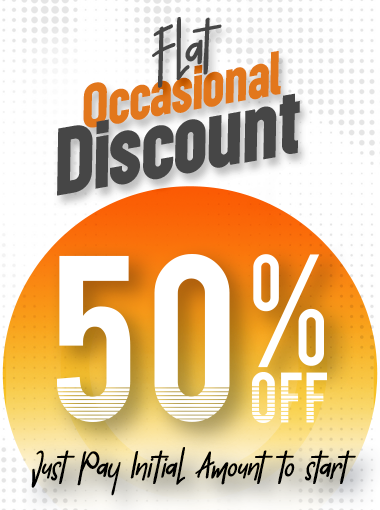How to Develop Carousal Style Websites?
Revolving banners or slideshows define carousel-style custom website development, which are still a popular alternative for showing numerous pieces of material without overloading the user. If you're thinking about including a carousel on your website, this is a comprehensive guide that will help you create one efficiently.
First, decide why you would like a carousel on your website and then recruit experts from affordable website development service help. Knowing your objective will influence the content and design of your carousel, whether it is to highlight goods, highlight services, or tell a brand story.
A carousel could be used, for instance, by an online retailer to showcase new items or continuing sales. On the other hand, a creative agency offering cheap website development deal may utilize it to showcase team or customer projects. The direction of your carousel's design and content is determined by defining your goal.
As you curate the content for your carousel, keep your goal in mind when seeking most appropriate best website development help. Select attention-grabbing visuals, concise copy, and obvious calls to action (CTAs) that speak to your target demographic.
Pick high-resolution images that are web-optimized to ensure fast loading speeds. Keep text concise yet impactful to convey your message effectively. And make sure CTAs are straightforward, guiding users to take the desired action, be it making a purchase or exploring further.
There are several carousel tools and frameworks available to simplify the implementation process. You can buy website development service from popular choices include Slick, Owl Carousel, and Swiper, offering customization options to align with your brand.
Consider factors like ease of integration with your website platform, user reviews, and mobile responsiveness when choosing a website development service online for a carousel tool. A well-reviewed, user-friendly tool ensures smoother development and a better user experience.
Given the rise of mobile browsing, designing with mobile responsiveness is non-negotiable. Your carousel should look and function seamlessly across various devices and screen sizes.
Most carousel tools offer mobile-responsive features, but always double-check by testing on different devices. Ensure elements like images, fonts, and buttons are optimized for mobile to provide a consistent user experience.
A fast-loading carousel enhances user experience and engagement. To achieve this:
Compress images without losing quality to reduce load times.
Use lazy loading to load images only when they appear on the screen, cutting down initial load time.
Use only essential scripts and styles to keep your carousel efficient.
After implementing your carousel, rigorous testing is crucial to iron out any issues. Test across browsers, devices, and screen sizes to ensure compatibility.
Monitor user engagement and feedback to evaluate your carousel's effectiveness. Are users interacting with your content? Are CTAs effective? Use this feedback to refine and improve your carousel continually.
Related Blogs
- Creating Engaging Social Media Graphics for Digital Marketing Success
- How to Use Custom Hashtags in Social Media Digital Marketing Posts
- How to design Social Media Thumbnails
- Get Details of the best Digital Marketing Companies
- Website Design Optimization Process
- Ways to Use Template or Theme with No Coding Website Design Experience
- Design WebAssembly (Wasm) Website Development
- How to Optimize Website Loading Speed?
- Google Sites: Best Online Website Design Builders
- What Are the Best Hosting Platforms for The Website Design?
- Specific Elements Needed in How to Website Design for an E-Learning Platform
- Agile Marketing: The Key to Keeping Up with Marketing Trends
- How to Avoid Ad Fatigue in Modern Digital Marketing Campaigns in 2024?
- How to Do Mastery of AI Assisted Tools in Digital Marketing?
- Tips to Migrate Html Blog Site to WordPress
- How to Set up GA4 Analytics for our Website for Enhanced Digital Marketing?
- Learn Spline 3D Design Integrating Spline/Webflow On Website Design Landing Page
- Importance of Source Files as AI, EPS, PDF, JPG, PNG Logo File Design
- Process of Low-Coding Website Design
- Tips to Remove Noise from Social Media Marketing Videos
- Tips for Divi Theme Site Optimization for Website Development
- How to Develop Carousal Style Websites?
- Open Source Integrated Web Development Environment
- Tips for CSS for a New Website Project to Modify Style of Search Bar
- How to Develop Online Store on Shopify Development
- Tips for Website Design for PSEE Basler Model Creation/Verification
- Tips for Dynamic Customized Website Design Using JavaScript Arrays
- How to Do Klaviyo Setup Assistant for Digital Marketing?
- Guide to Use Website Development Methodology Using AngularJS
- Importance of Using Flat Website Design to Enhance Brand Message
- How to Include Social Media Connectors in Website Development?
- Tech Stack and Infrastructure Natively Enable Digital Marketing Content Discovery
- How to Generate and Use Meta Ads in Digital Marketing?


